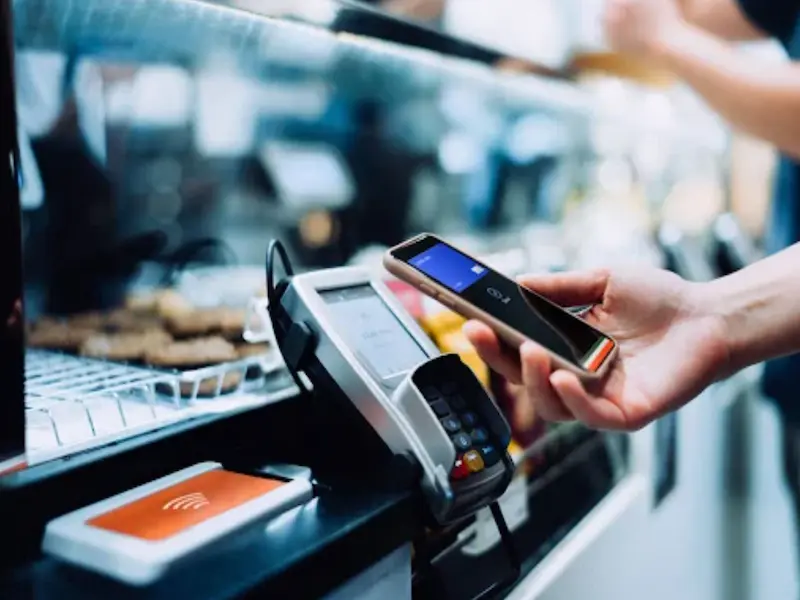- Near field communication enables devices to communicate wirelessly over short distances, allowing for secure mobile payments.
- Users can make quick transactions by simply tapping their smartphones to compatible payment terminals.
- NFC technology incorporates encryption and tokenisation to protect sensitive financial information during transactions.
NFC mobile payments are revolutionising the way consumers conduct transactions in today’s fast-paced digital world. This innovative technology allows smartphones to interact with payment terminals seamlessly, providing a convenient alternative to cash and credit cards.
As businesses and consumers increasingly embrace contactless payment methods, understanding NFC technology becomes essential. In this blog, we will explore how NFC mobile payments work, their benefits, security features, and the future of this payment technology.
Definition of NFC mobile payment
NFC, or near field communication, is a wireless communication technology that allows two devices to exchange data when they are placed close together, typically just a few centimeters apart. This technology has gained immense popularity in mobile payments, enabling users to make transactions quickly and securely using their smartphones or smartwatches.
Also read: Apple opens mobile payments to rivals after EU regulations
Also read: Apple opens mobile payments to rivals after EU regulations
The NFC payment process
The NFC payment process typically involves three main components.
NFC-enabled device: This could be a smartphone equipped with an NFC chip, a smartwatch, or any other device that supports NFC technology.
Payment terminal: Retailers use NFC-compatible point-of-sale terminals that can read information from NFC devices.
Secure network: Most NFC payments involve a secure network that facilitates the transfer of payment data between the device and the payment processor.
When a user wishes to make a payment, they simply tap their NFC-enabled device against the POS terminal. The device transmits payment information, which is processed in real-time, allowing for a swift transaction.
Benefits of NFC mobile payments
Convenience
One of the most significant advantages of NFC mobile payments is convenience. Consumers no longer need to carry cash or physical cards; instead, they can store multiple payment options on their devices. With a simple tap, customers can complete their transactions within seconds, significantly reducing wait times at checkout.
Enhanced security
Security is paramount when it comes to financial transactions. NFC technology employs several security measures, including encryption and tokenisation. When a payment is made, the actual credit card number is not transmitted. Instead, a one-time token is generated, ensuring that sensitive information is kept secure. Additionally, many NFC-enabled devices require biometric authentication, such as fingerprint recognition or facial recognition, adding another layer of security.
Global adoption
NFC mobile payments are being widely adopted across the globe. Major companies like Apple, Google, and Samsung have integrated NFC capabilities into their payment platforms (Apple Pay, Google Pay, Samsung Pay), making it easier for consumers to use their devices for transactions. Many retailers are also upgrading their payment systems to accept contactless payments, indicating a shift in consumer behavior toward mobile payment solutions.
The future of NFC mobile payments
The future of NFC mobile payments looks promising as technology continues to advance. We can expect to see wider acceptance among businesses and increased functionality within mobile payment apps. Innovations such as peer-to-peer payment systems and integration with loyalty programs can enhance user experience even further.
NFC technology may play a crucial role in supporting cryptocurrency transactions as digital wallets gain popularity, opening up new avenues for consumers and businesses alike.
NFC mobile payments offer a fast, convenient, and secure way for consumers to conduct transactions in an increasingly cashless society. With growing adoption and continual advancements in technology, NFC payments are set to become a standard method of payment in our everyday lives. As businesses adapt to these changes, it’s clear that NFC technology is here to stay, transforming how we approach financial transactions.

